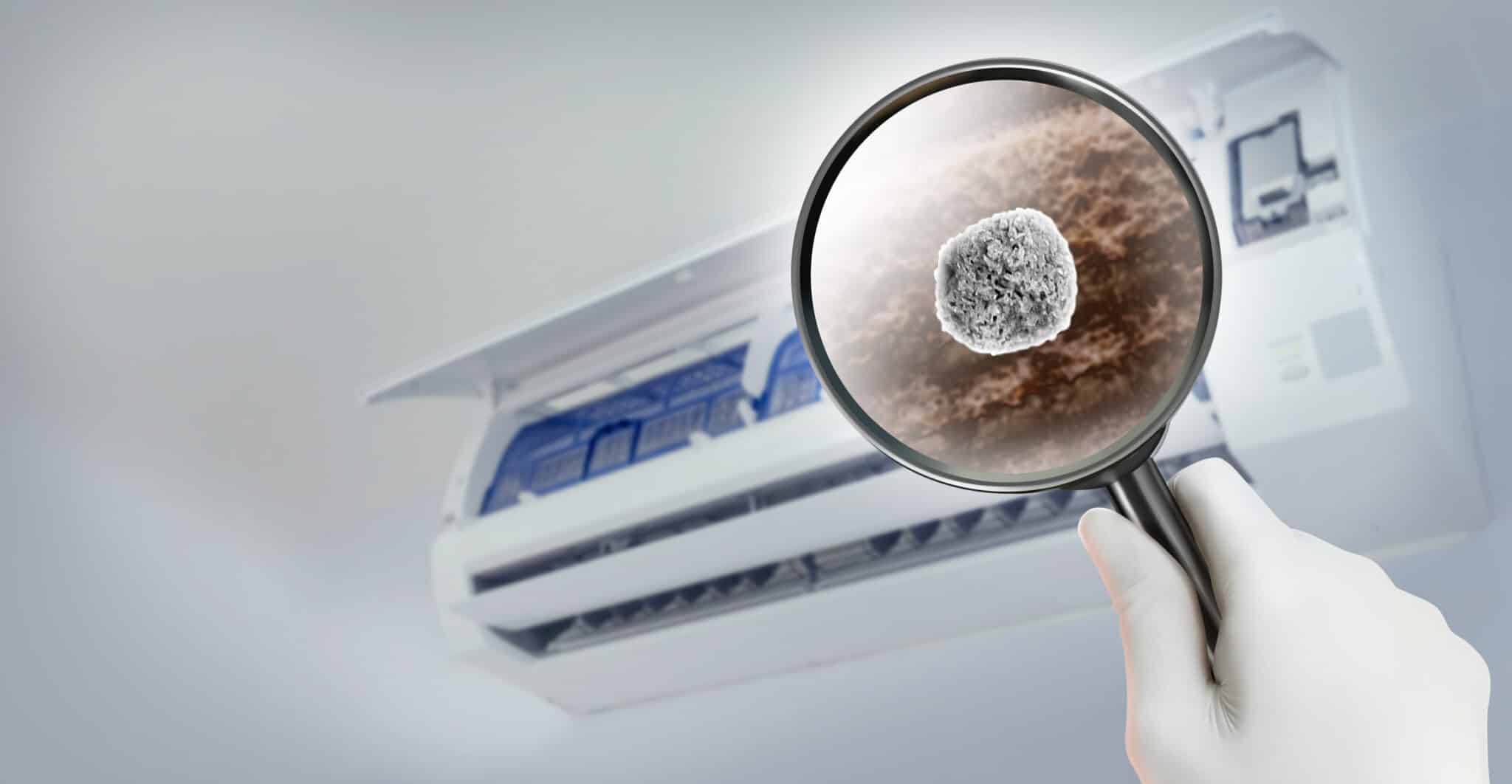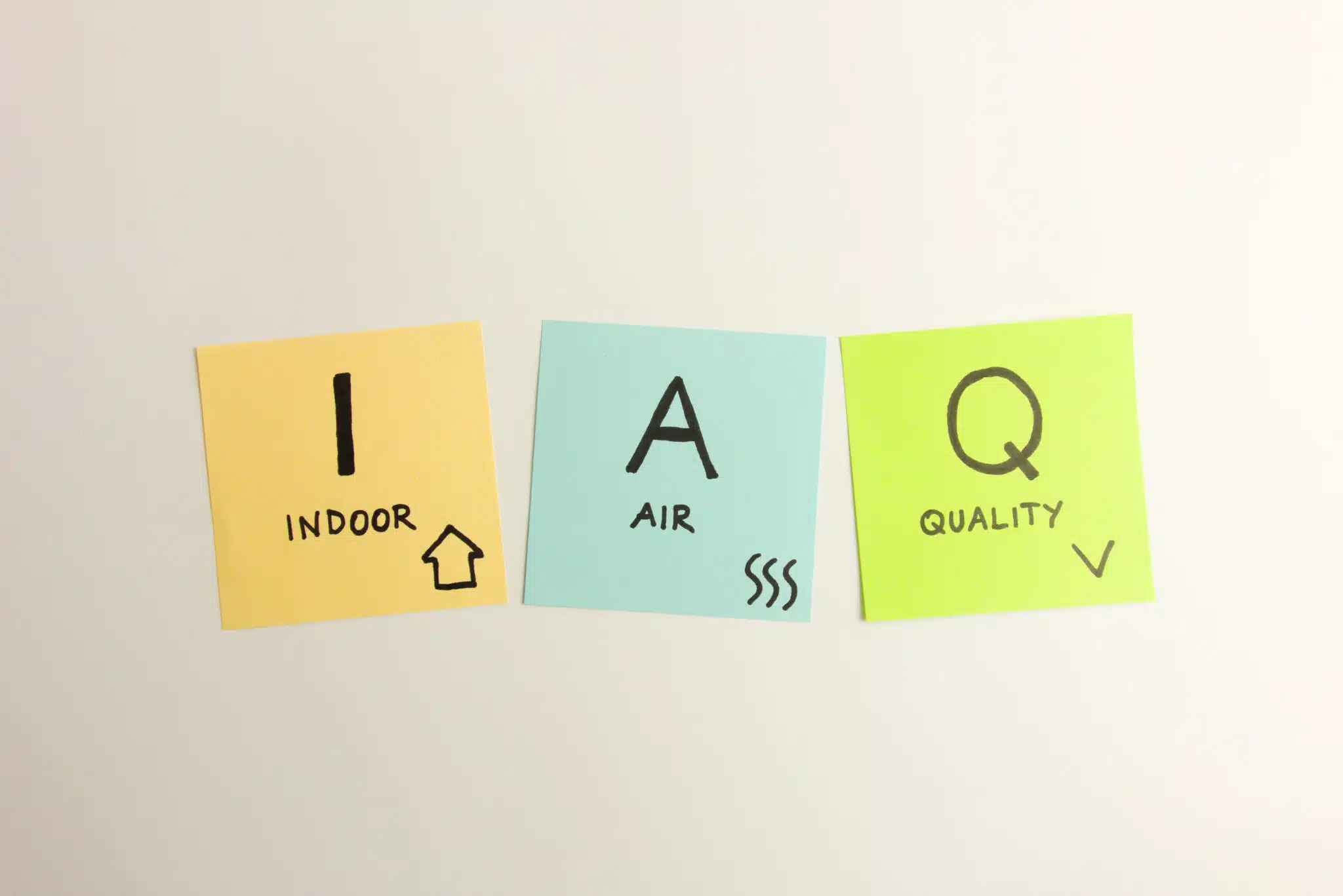Indoor Air Quality – Does the air in your home feel dry, stale, or just… off during winter? You’re not alone! When the temperatures drop, we close our windows, crank up the heat, and suddenly, fresh air becomes a distant memory. This can lead to dry skin, scratchy throats, and even trouble breathing comfortably.
But don’t worry—there are simple ways to keep your home’s air clean and healthy. In this guide, we’ll share easy tips to improve indoor air quality this winter, so your home stays cozy and fresh. Let’s get started!
Why Indoor Air Quality Is Important in Winter
The Effects of Poor Air Quality
Poor indoor air quality becomes more noticeable during winter when windows stay closed, and fresh air has no way to enter. Dust, pet dander, and other airborne particles build up, creating an environment that feels stuffy and uncomfortable. Heating systems contribute to the problem by drying out the air, leading to dry skin, irritated throats, and even worsening allergies or asthma symptoms.
Without proper ventilation, harmful pollutants, including carbon monoxide from older heating systems, can accumulate to dangerous levels. These issues make addressing indoor air quality a critical part of creating a healthy and comfortable home during the colder months.
The Benefits of Clean Indoor Air
Clean indoor air provides a wide range of benefits that can improve your overall health and well-being during winter. With fewer allergens and pollutants, you’re less likely to experience respiratory problems or allergy flare-ups.
Balanced humidity levels can prevent dry skin, static electricity, and damage to wood furniture. Improved air circulation also helps your heating system run more efficiently, saving energy and lowering utility costs. Creating a cleaner air environment not only boosts your comfort but also helps you maintain a safer and more enjoyable living space for the entire season.

Common Indoor Air Quality Issues in Winter
Dry Air
Dry air is one of the most common indoor air quality problems during winter. Heating systems work hard to keep your home warm, but they often strip the air of moisture, leaving it uncomfortably dry.
This can lead to issues like cracked skin, itchy eyes, and irritated nasal passages, making it harder to stay healthy. Dry air can also damage your home, causing wood furniture and floors to crack or warp over time. Addressing this problem is key to keeping both your family and your home in good condition throughout the season.
Dust and Allergens
During winter, closed windows mean that dust, pet dander, and other allergens have nowhere to go. These particles accumulate quickly, creating an environment that’s especially challenging for those with allergies or asthma. Carpets, furniture, and even air ducts can trap these irritants, releasing them into the air whenever they’re disturbed.
Without regular cleaning and filtration, the air in your home can become increasingly polluted. Staying on top of allergens is essential for maintaining a cleaner, healthier living space during the colder months.
Poor Ventilation
Poor ventilation is a common issue when homes are sealed up tight to keep the heat in. Without fresh air circulating, pollutants like cooking odors, cleaning chemicals, and even everyday activities can make indoor air stale and uncomfortable. Stagnant air also allows harmful gases, like carbon monoxide, to linger longer than they should.
Proper ventilation doesn’t mean you have to let all the heat escape; it’s about creating a safe balance between fresh air and warmth. Addressing ventilation issues helps ensure that your home stays both cozy and safe.
Increased Carbon Monoxide Risks
Winter brings a higher risk of carbon monoxide buildup due to increased use of heating systems, fireplaces, and other fuel-burning appliances. Poorly maintained systems can release this odorless, invisible gas, which is dangerous and even deadly in high concentrations.
Homes with limited ventilation are especially vulnerable, as carbon monoxide has nowhere to disperse. Installing a carbon monoxide detector and scheduling regular maintenance for your heating system are essential safety measures. Keeping your home safe from this invisible threat is a key part of managing indoor air quality during winter.
Practical Tips to Improve Indoor Air Quality in Winter
Use a Humidifier
A humidifier is a simple and effective way to combat dry winter air and improve indoor air quality. By maintaining a humidity level between 30% and 50%, you can reduce dryness in the air that causes issues like cracked skin, irritated eyes, and static electricity.
A humidifier also helps protect wooden furniture and flooring from cracking due to excessive dryness. Choose a humidifier that fits your room size and clean it regularly to prevent mold and bacteria buildup. Proper placement, like in the center of the room, ensures even moisture distribution throughout your space.
Replace or Clean Air Filters Regularly
Your HVAC system’s air filters are your first line of defense against dust, allergens, and other pollutants. Over time, these filters become clogged, making it harder for your system to circulate clean air efficiently.
Replacing or cleaning filters every one to three months, depending on use, keeps airflow smooth and reduces the number of irritants in your home. Clean filters also make your heating system work more efficiently, saving you money on energy bills. Staying consistent with this maintenance step is an easy way to keep your air fresh and healthy.
Ventilate Your Home Safely
Even in winter, it’s essential to let fresh air into your home to remove stale air and pollutants. You can ventilate safely by briefly opening windows for a few minutes a day, ideally when the outdoor temperature is mildest.
Using exhaust fans in areas like the kitchen and bathroom helps eliminate odors, moisture, and airborne particles that can linger. Ventilation improves air circulation without significantly affecting your home’s overall temperature. It’s a quick and effective step to refresh your home while maintaining indoor warmth.
Add Indoor Plants
Indoor plants do more than beautify your space—they can also help purify the air by absorbing carbon dioxide and releasing oxygen. Certain plants, like peace lilies, spider plants, and snake plants, are especially effective at filtering out toxins and improving air quality.
However, it’s important to avoid overwatering, as damp soil can lead to mold growth. Position your plants in areas with good sunlight, and take care of them regularly to keep them thriving. Adding plants is a natural and low-maintenance way to create a healthier home environment.
Invest in an Air Purifier
An air purifier is a powerful tool for improving indoor air quality, especially in homes with pets, smokers, or allergy sufferers. High-quality air purifiers with HEPA filters can capture tiny particles like dust, pollen, and smoke, ensuring that the air you breathe is clean.
Look for models designed to fit the size of your room for maximum efficiency. Air purifiers are especially useful in bedrooms, where clean air can help improve sleep quality. By incorporating this device, you can enjoy fresher, healthier air with minimal effort.
Keep Your Home Clean
Regular cleaning is one of the most effective ways to keep your indoor air fresh and allergen-free. Vacuuming carpets, rugs, and upholstery at least once a week removes dust and pet dander that collect over time. Dusting surfaces with a damp cloth prevents particles from becoming airborne.
It’s also a good idea to wash bedding frequently and minimize clutter that can trap dust. Using cleaning products with minimal chemicals reduces the release of harmful fumes into your air. A clean home is the foundation for better air quality throughout the winter months.
Maintaining HVAC Systems for Better Air Quality
Schedule a Professional HVAC Inspection
A well-maintained HVAC system is essential for good indoor air quality during winter. Professional inspections can identify and resolve issues like dirty ducts, clogged filters, or malfunctioning parts that affect air circulation. Technicians can also clean ducts to remove dust, mold, and other pollutants that build up over time.
Routine maintenance ensures your system runs efficiently, keeping your home warm while reducing allergens and irritants. Regular inspections not only improve air quality but also extend the lifespan of your heating system.
Seal Air Leaks
Air leaks in ducts or around windows and doors can compromise your indoor air quality by allowing pollutants to enter and warm air to escape. Sealing gaps with weatherstripping or caulk prevents outdoor irritants like pollen and exhaust fumes from sneaking in.
It also helps your HVAC system work more effectively, keeping air filtered and evenly distributed throughout your home. Properly sealed ducts reduce the chances of pollutants circulating through your living space. By addressing leaks, you’ll create a cleaner and more energy-efficient environment.
Upgrade to a High-Efficiency HVAC System
Older HVAC systems often lack the advanced filtration and energy efficiency found in modern models. Upgrading to a high-efficiency system ensures better air circulation and includes features like HEPA filters, which can trap smaller particles. These systems also use less energy, reducing your heating costs while keeping your air cleaner.
Although the initial investment may seem high, the long-term benefits of improved air quality and lower utility bills make it worthwhile. An upgraded HVAC system can transform your home into a healthier, more comfortable space.
Natural Ways to Improve Air Quality
Open Curtains for Sunlight
Natural sunlight isn’t just great for your mood; it’s also a natural disinfectant that can help reduce mold and bacteria in your home. Opening your curtains during the day lets in sunlight that warms your space while minimizing the growth of harmful organisms.
Sunlight also helps to dry out damp areas, which can prevent the buildup of mildew. Even in winter, a little extra light can make a big difference in keeping your air clean. Maximizing sunlight is an effortless way to naturally improve indoor air quality.
Use Natural Air Fresheners
Many store-bought air fresheners release chemicals that can lower air quality, especially in closed spaces. Instead, opt for natural alternatives like essential oil diffusers, which add pleasant scents without harmful toxins. Simmering spices like cinnamon or cloves on the stovetop can also create a cozy, chemical-free aroma.
Beeswax candles are another great option—they not only smell lovely but can also help reduce airborne pollutants. Using natural fresheners keeps your home smelling great while maintaining a healthier environment.
Limit the Use of Candles and Fireplaces
While candles and fireplaces add warmth and ambiance, they also produce smoke and soot, which can affect indoor air quality. Paraffin candles, in particular, release tiny particles that can irritate your lungs. Consider switching to LED candles for a similar vibe without the pollution.
If you use a fireplace, make sure it’s properly vented and cleaned regularly to minimize harmful emissions. Limiting these sources of indoor pollutants helps keep the air in your home cleaner and healthier for everyone.
Benefits of Improved Indoor Air Quality in Winter
Health Benefits
Improving indoor air quality during winter has a direct impact on your health. Cleaner air means fewer allergens, which reduces the chances of sneezing, itchy eyes, and breathing issues. Balanced humidity levels help prevent dry skin, cracked lips, and sore throats, making you feel more comfortable overall.
Better air circulation also lowers the risk of respiratory infections caused by trapped pollutants and stale air. By focusing on air quality, you’re creating a healthier environment that supports better sleep and overall well-being for your entire household.
Enhanced Comfort
A home with clean, fresh air feels much more inviting and comfortable. Proper humidity levels eliminate the discomfort of dry air, which can irritate your skin and nasal passages. Improved air circulation ensures that unpleasant odors, smoke, or cooking smells don’t linger in your space.
Adding natural elements like plants and sunlight further enhances the cozy atmosphere. When your indoor air is balanced and free of pollutants, it’s easier to relax and truly enjoy your time at home during the winter.
Energy Efficiency
Better air quality contributes to your home’s energy efficiency by helping your HVAC system run smoothly. Clean filters and ducts allow air to flow freely, reducing the workload on your heating system. When your HVAC system doesn’t have to work as hard, it uses less energy, which can lower your utility bills.
Sealing air leaks and upgrading to modern systems with advanced filtration also enhance energy efficiency. By maintaining clean air, you’re not only improving comfort but also saving money and reducing your environmental impact.
Common Mistakes to Avoid
Neglecting Air Filters
Forgetting to clean or replace air filters is a common mistake that can quickly worsen indoor air quality. Dirty filters restrict airflow, allowing dust, allergens, and pollutants to circulate throughout your home. They also force your HVAC system to work harder, increasing energy usage and potentially leading to costly repairs.
Regularly checking and replacing filters, especially during winter, ensures your system runs efficiently and keeps your air clean. Neglecting this simple step can have long-term consequences for both your health and your home.
Over-Humidifying
While adding moisture to the air is important, too much humidity can create its own set of problems. High humidity levels encourage mold growth, which can harm your health and damage your home.
Condensation on windows and walls can also lead to structural issues if left unchecked. Using a humidifier with a built-in hygrometer helps you maintain the ideal humidity range of 30-50%. Avoiding over-humidification is key to keeping your air comfortable and safe without introducing new issues.
Ignoring Ventilation
Proper ventilation is often overlooked during winter when keeping warm takes priority. Sealing your home too tightly can lead to stale air and the buildup of harmful pollutants like carbon monoxide. Even brief ventilation, such as cracking a window for a few minutes or using exhaust fans, can make a big difference.
Ignoring ventilation not only affects air quality but can also pose health risks over time. Balancing warmth with fresh air circulation is crucial for maintaining a healthy indoor environment.
Breathe Easy This Winter in Cockeysville, Timonium, and Pikesville!
Don’t let poor indoor air quality affect your health and comfort this winter. At One Hour Heating & Air Conditioning of Cockeysville, we’re here to help you create a cleaner, healthier home.
From expert HVAC maintenance to air quality solutions tailored to your needs, we’ve got you covered. Call us today and ensure your home’s air is as cozy as it is fresh all season long!

FAQ Section
What is the ideal indoor humidity level for winter?
The ideal humidity level for maintaining good indoor air quality during winter is between 30-50%. It prevents issues like dry skin, static electricity, and respiratory discomfort while ensuring balanced moisture levels.
How often should I change my HVAC air filter?
For optimal indoor air quality, HVAC air filters should be replaced every 1-3 months. The frequency depends on your system usage, the type of filter you use, and whether you have pets or allergies. Regular filter changes keep your air cleaner and improve overall indoor air quality by reducing dust and pollutants.
Do houseplants really improve air quality?
Yes, certain houseplants can contribute to better indoor air quality by removing toxins and increasing oxygen levels. Popular options like peace lilies, snake plants, and spider plants are known for their air-purifying capabilities.
What are the best air purifiers for winter?
Air purifiers with HEPA filters are the best choice for improving indoor air quality in winter. These devices effectively capture tiny particles like dust, pollen, and smoke, ensuring fresher and healthier air. For optimal indoor air quality, choose a purifier sized to your room and clean the filter regularly.
Can I improve indoor air quality without spending much?
Absolutely! Improving indoor air quality doesn’t have to break the bank. Regular cleaning, proper ventilation, and using natural air fresheners like essential oils are cost-effective ways to enhance indoor air quality in your home. Adding houseplants is another budget-friendly option that can contribute to fresher air.






